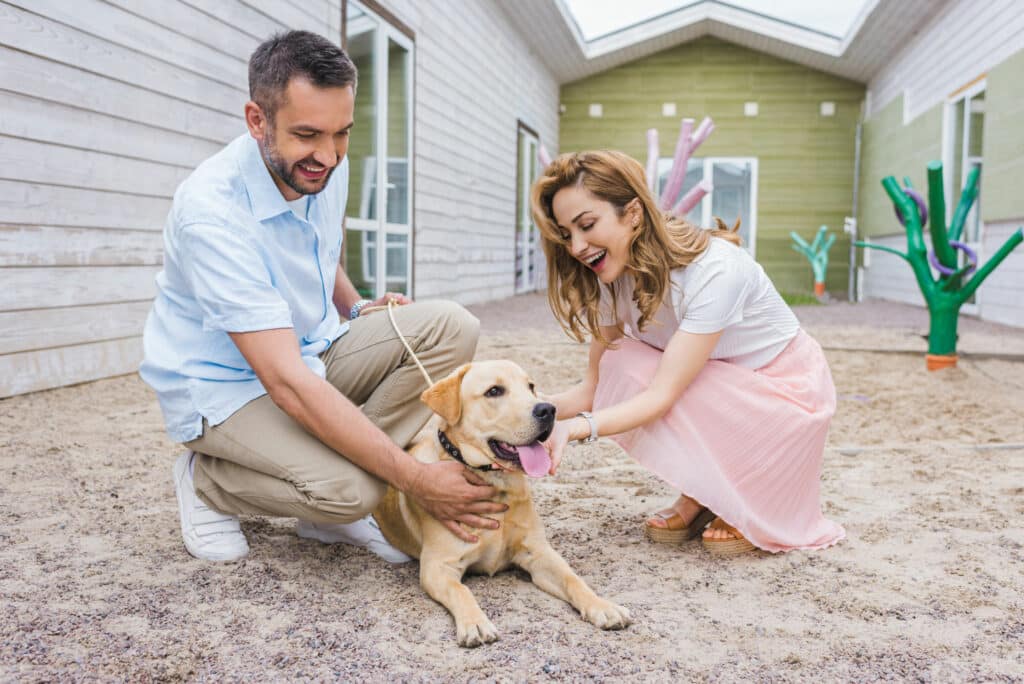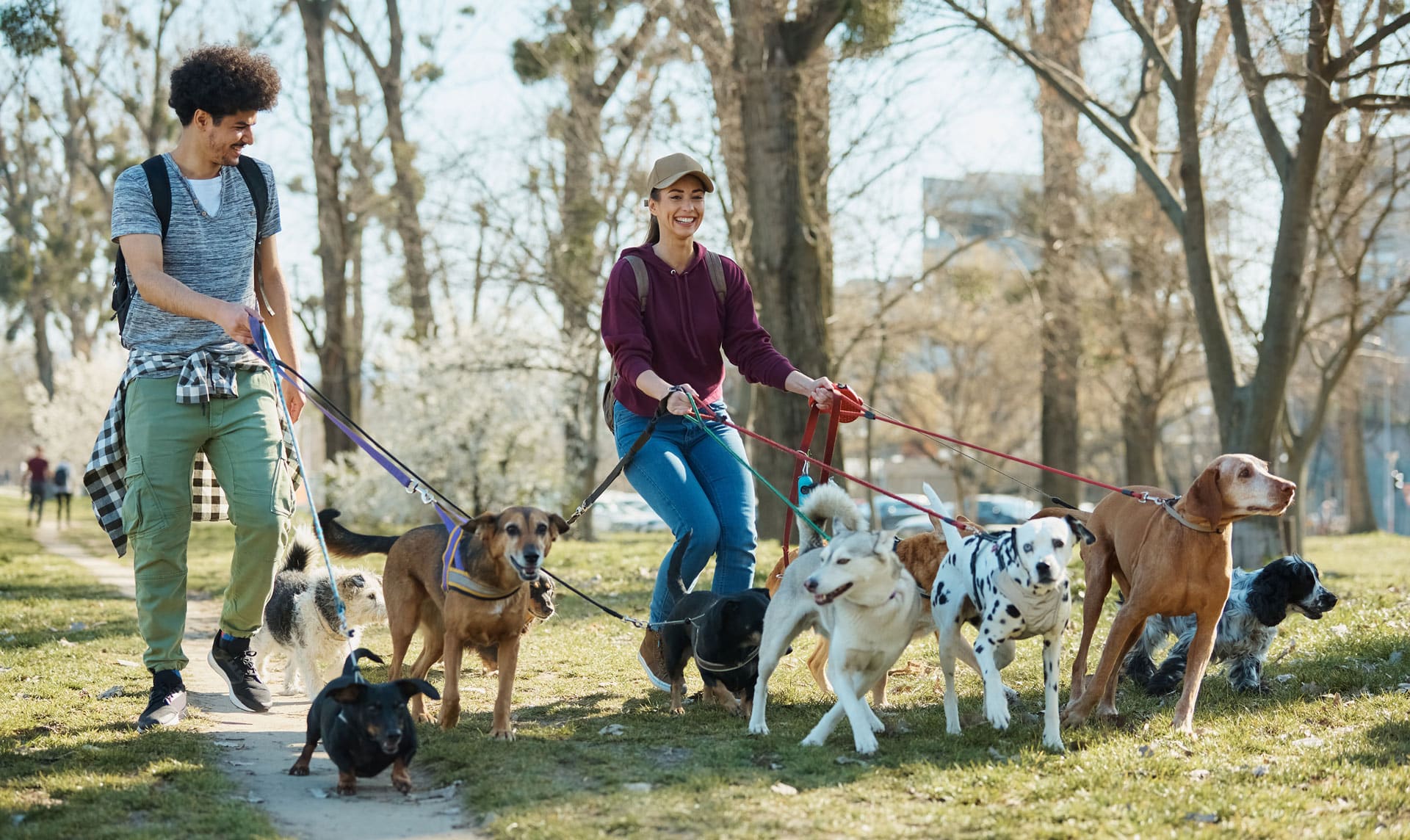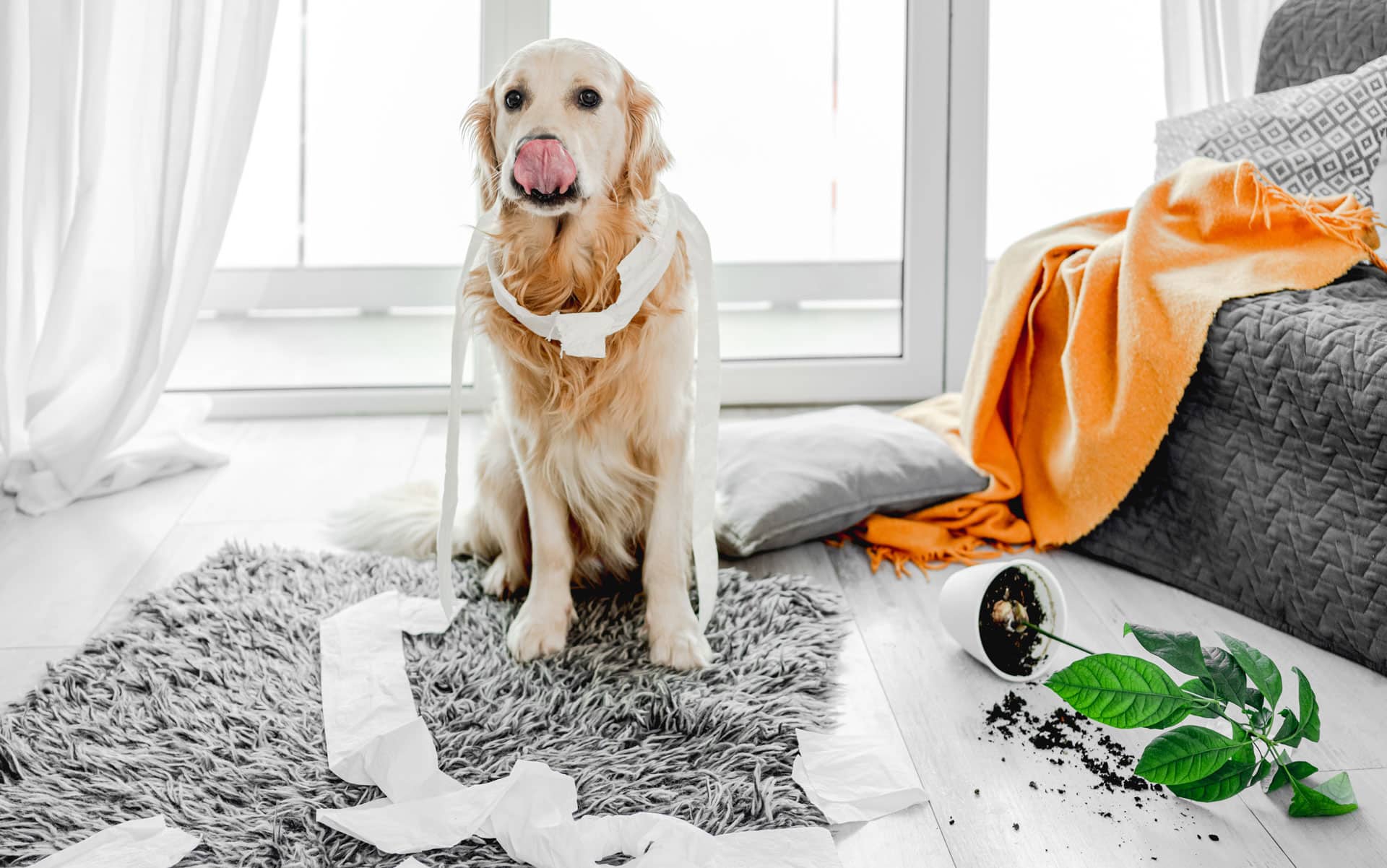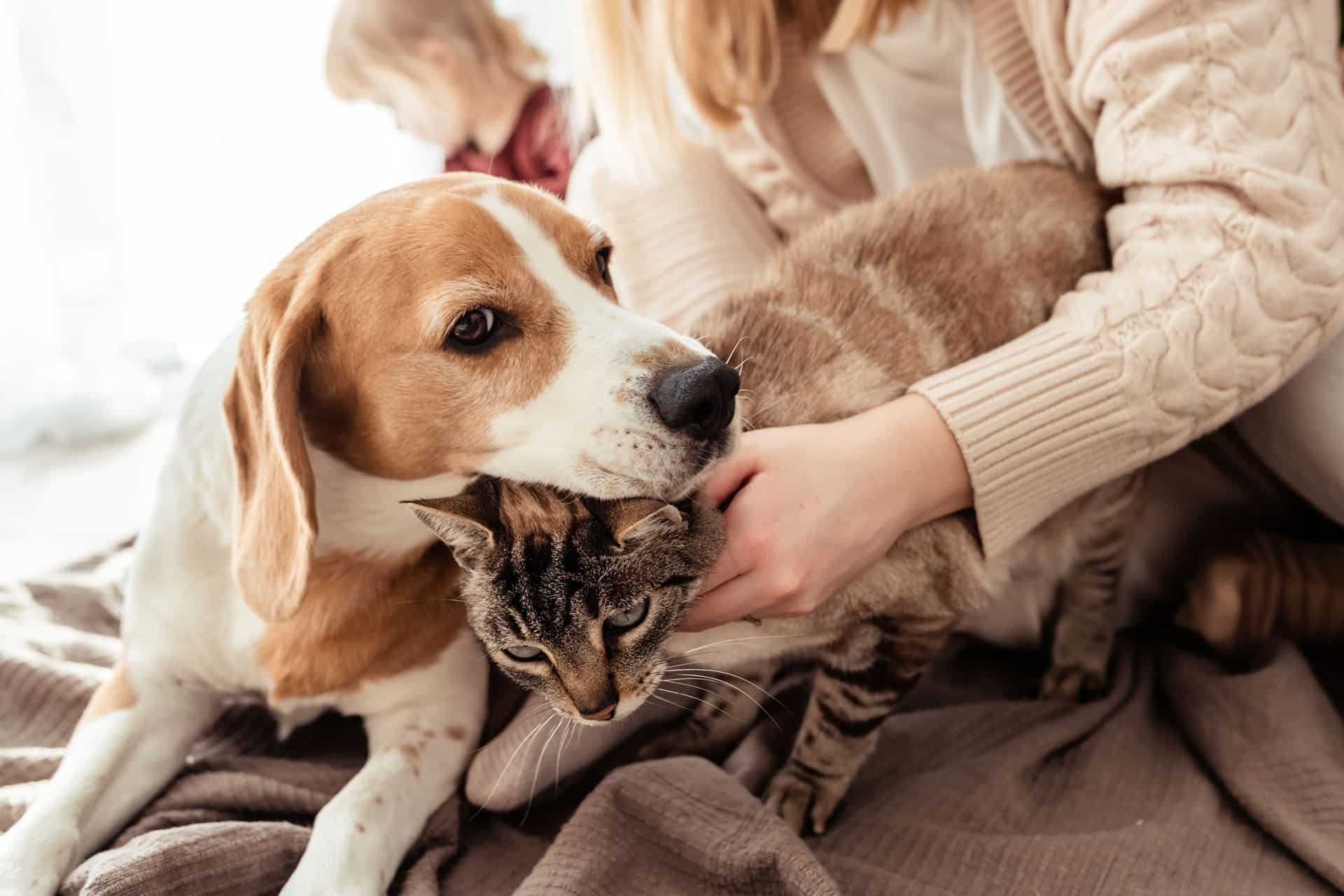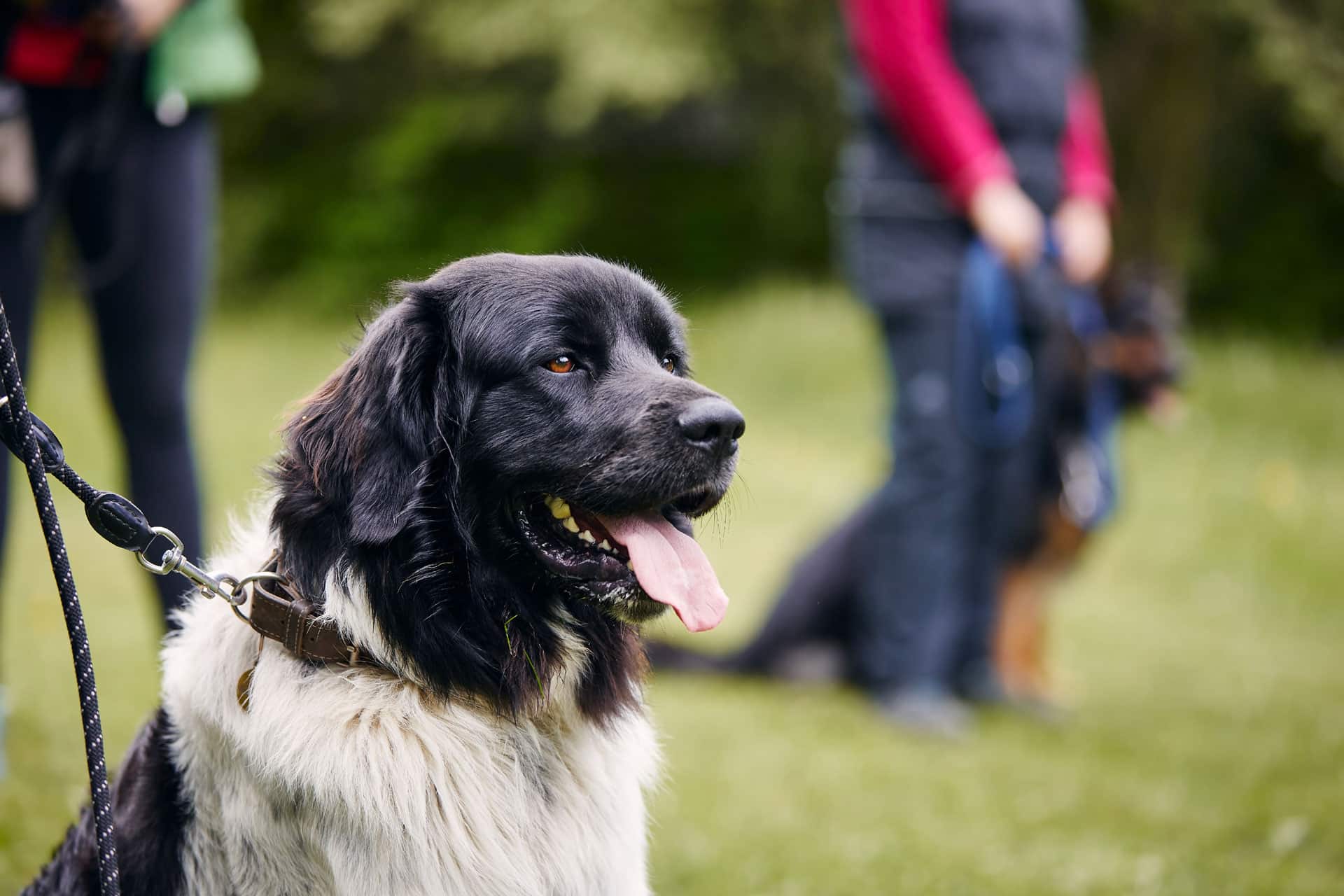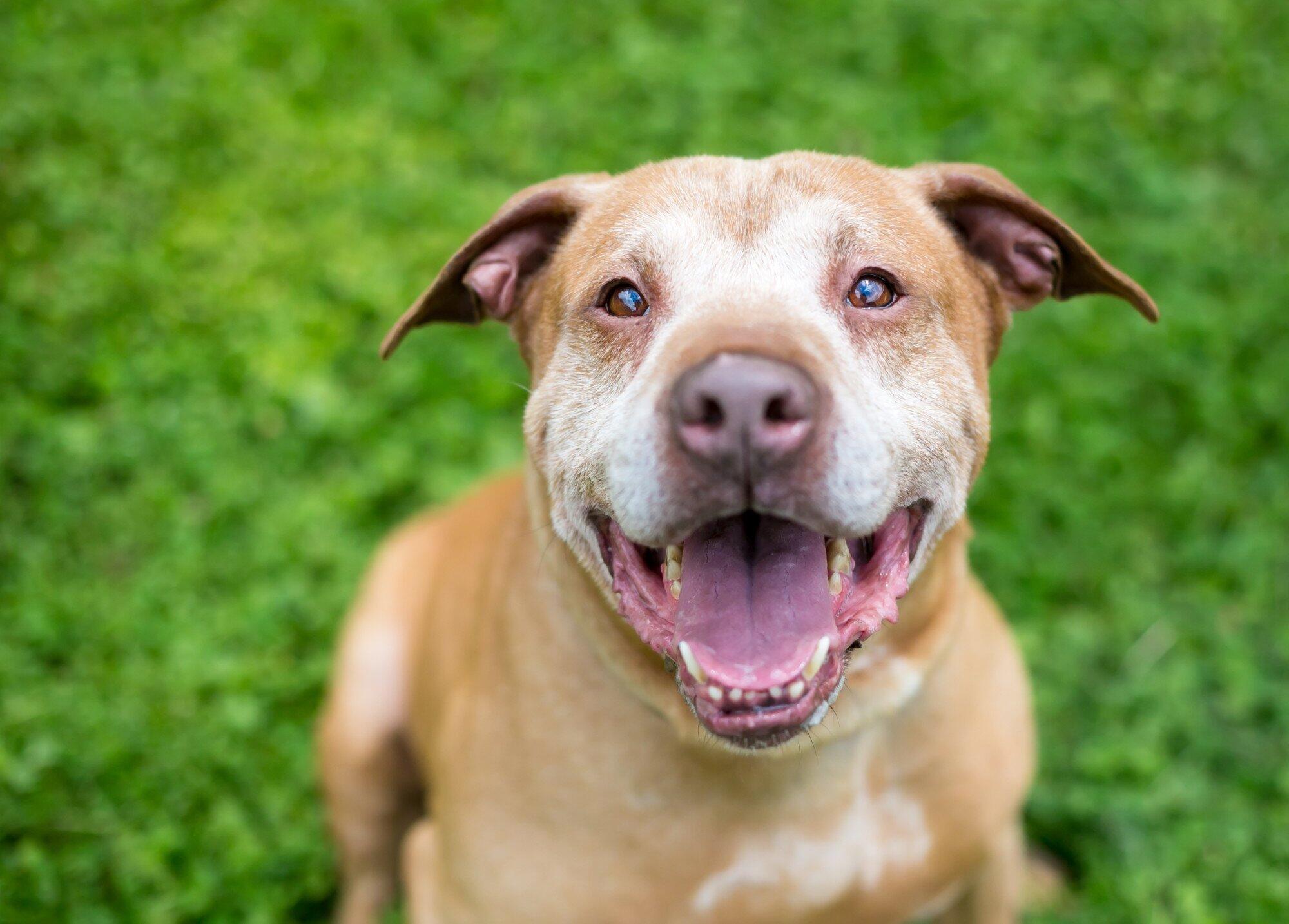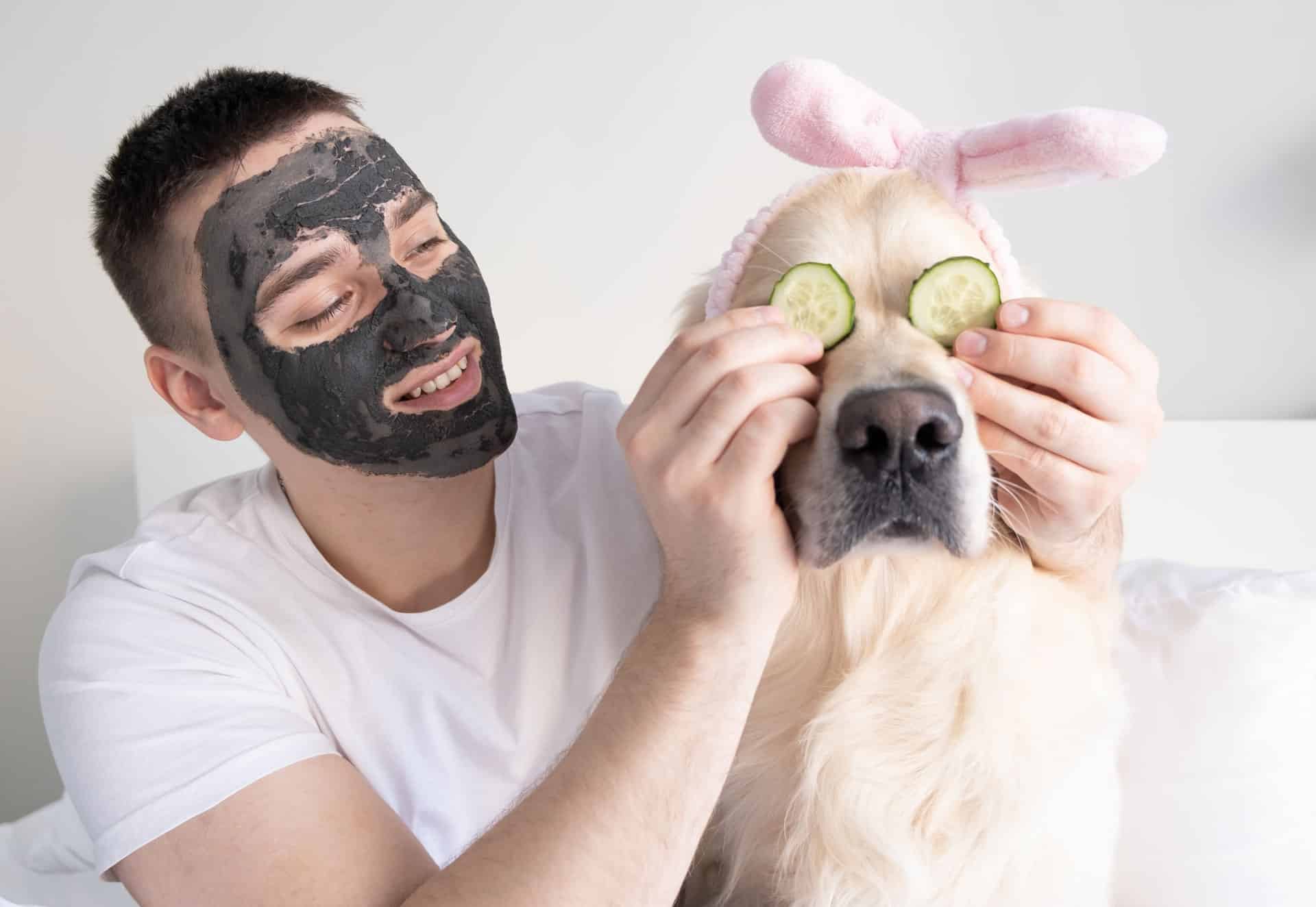Introduction
Are you considering adding a furry friend to your family? Look no further than adopting a dog! Not only do dogs provide unconditional love and companionship, but there are countless benefits to welcoming one into your home. From improved physical health to reduced stress levels, adopting a dog can have positive impacts on both you and your new four-legged companion. But before diving in headfirst, it’s crucial to properly prepare for the responsibilities of pet ownership. So grab a leash and let’s explore the many advantages of adopting a dog!
A brief overview of the benefits of adopting a dog
Adopting a dog is a big decision, but it can also bring many benefits to your life. One of the most obvious benefits is companionship. Dogs are known for their loyalty and affection towards their owners, making them great pets for those who value genuine friendship.
Another benefit of adopting a dog is the opportunity for exercise and outdoor activities. Taking your furry friend on daily walks or runs not only keeps them healthy but also provides you with physical activity too.
Dogs can also provide emotional support in times of stress or anxiety. Studies have shown that petting dogs can lower blood pressure and reduce feelings of loneliness.
Adopting a dog from a shelter or rescue organization can also give you a sense of fulfillment knowing that you are giving an animal in need a second chance at life.
Having a dog as part of your family can teach children important lessons about responsibility, compassion, and empathy towards animals and other living beings.
Adopting a dog has numerous benefits that go beyond just having another pet around the house. It’s no wonder why so many people consider dogs to be “man’s best friend.”
Importance of proper preparation before adopting
Before adopting a dog, it’s crucial to prepare yourself and your home for the new addition. This preparation involves more than just buying supplies and picking out a breed – it requires careful consideration of the responsibilities and commitment that come with owning a pet.
Firstly, you need to consider if adopting a dog is right for you. Dogs require daily exercise, attention, and affection. They also have specific needs based on their breed and age. It’s essential to research different breeds thoroughly before adoption.
Once you’ve decided on adoption, ensure that everyone in your household is prepared for the responsibility by discussing expectations and duties related to caring for the dog.
Next comes preparing your home environment; this includes purchasing all necessary supplies such as food bowls, leashes/collars, beds/crates, etc., but also means making sure your space is safe for dogs by removing any hazards or toxic substances from their reach.
Finally comes finding resources such as local veterinarians or trainers who can help provide additional support in caring for your new furry friend after they’re adopted!
Choosing the Right Breed
Choosing the right breed of dog is an important decision when adopting a new furry friend. It’s essential to consider factors such as size, energy level, grooming needs, and temperament before making your final choice.
Size is a crucial factor because it affects the amount of living space required for your pet. If you live in a small apartment, then a large breed may not be suitable. On the other hand, if you have plenty of outdoor space and enjoy long walks or runs, then larger breeds like Labradors or Golden Retrievers can be great companions.
Energy levels are another vital consideration since some dogs need more exercise than others. For example, working breeds such as Border Collies require daily mental stimulation and physical activity to stay happy and healthy.
Grooming needs are also essential to consider since some breeds require regular grooming sessions while others do not shed much hair at all. High-maintenance coats might require professional grooming services that can add up quickly over time.
It’s important to think about temperament when selecting a breed. Some dogs are naturally friendly with strangers while others may need more socialization training from their owners.
Choosing the right breed requires careful thought regarding factors such as size, energy level, grooming needs, and temperament before making any commitments.
Factors to consider when choosing a breed
Choosing the right breed of dog is an important decision that requires careful consideration. There are several factors to consider when selecting a breed that will be the best fit for your lifestyle and personality. One factor to consider is size, as different breeds can vary greatly in terms of their adult weight and height.
The energy level is another key factor to take into account. Some breeds require more exercise than others, so it’s important to choose a breed that matches your activity level and preferences. Grooming needs should also be considered, as some breeds require regular grooming or trimming while others have minimal coat maintenance requirements.
Temperament is perhaps one of the most critical factors when choosing a breed. Different breeds have distinct personalities and temperaments, ranging from highly active and outgoing to calm and reserved. Potential owners need to research different breeds thoroughly before making a final decision.
It’s worth noting as well that mixed-breed dogs can make excellent pets due to their unique combination of traits from multiple breeds. Researching different resources such as breed guides, and online forums, or consulting with veterinarians can help you determine which type of dog may be best suited for you based on these various considerations.
Benefits of adopting mixed-breed dogs
Adopting a mixed-breed dog can provide many benefits for both the owner and the pet. Mixed-breed dogs come in all shapes, sizes, and personalities, making it easier to find a dog that fits your lifestyle. Plus, adopting a mixed-breed dog means you are giving a loving home to an animal who may have had a difficult start in life.
One benefit of adopting a mixed-breed dog is its typically lower risk for breed-specific health issues. Purebred dogs often suffer from genetic disorders due to selective breeding practices over generations. On the other hand, mixed breeds tend to have fewer health problems since they inherit diverse genes from different breeds.
Another advantage of owning a mixed-breed dog is its unique appearance and personality traits. Owners of purebred dogs often gravitate towards specific physical characteristics or temperaments associated with certain breeds. However, with mixed breeds there’s always an element of surprise – you never know what combination of traits your new furry friend will bring!
Adopting a mixed breed also supports responsible pet ownership by breaking down stereotypes about shelter pets being less desirable than purebreds bought from breeders or stores. By choosing adoption instead of shopping at pet stores or through online sellers without proper credentials we help reduce the overpopulation problem as well.
If you’re considering adding a furry member into your family don’t overlook the potential benefits that come along with adopting one!
Resources for researching breeds
When choosing a breed to adopt, it’s important to research and learn about different breeds’ characteristics. There are various resources available both online and offline that can help you in this process.
One useful resource for researching dog breeds is breed guides. These can be found in bookstores or libraries or even purchased online. They provide comprehensive information on each breed, including their temperament, energy level, grooming needs, and potential health issues.
Another great resource is online forums dedicated to dogs and dog ownership. You can find forums specific to certain breeds or general forums where you can ask questions and share experiences with other dog owners. This allows you to get firsthand information from people who have experience owning the type of dog you are considering adopting.
Many animal shelters also offer resources for researching breeds. Some have staff members trained in matching families with the right type of dog based on their lifestyle and preferences.
It’s important not only to consider a breed’s physical traits but also its personality traits when deciding which one will fit best into your household dynamic. By utilizing these resources for researching breeds, you’ll be better equipped to choose the perfect furry friend for your family!
Preparing Your Home
Preparing Your Home
Before bringing a new dog into your home, it’s important to make sure that you have everything ready for their arrival. This includes gathering necessary supplies and making adjustments around the house to ensure their safety.
Necessary supplies for a new dog include food, a water bowl, a leash, a collar, a bed, and a crate. It is important to choose high-quality items that will last long-term use. Additionally, consider purchasing toys and treats for your new furry friend!
Dog-proofing your home is also crucial before bringing in a new pet. This means securing cabinets with hazardous chemicals or foods out of reach from the dog; hiding electrical cords; removing toxic plants; and covering any open garbage cans.
Setting up a designated area for your new dog can help them feel safe and secure as they adjust to their surroundings. Consider placing their bed or crate in an area that is quiet but still accessible so they can see you throughout the day.
Taking time to properly prepare your home before adopting a dog is essential for ensuring both their safety and happiness in their new environment!
Necessary supplies for a new dog
When you bring home a new dog, there are some necessary supplies that you’ll need to have on hand. These items will help ensure your dog’s comfort and safety in their new environment.
First and foremost, food and water bowls are essential. Look for stainless steel or ceramic options that are easy to clean and won’t harbor bacteria. You’ll also want to purchase high-quality food specifically formulated for your dog’s age, breed, and activity level.
A leash and collar are necessary for taking your new pup on walks around the neighborhood or to the park. Choose a collar that fits snugly but isn’t too tight, allowing space for two fingers between the collar and neck. A well-made leash is equally important; opt for one that’s strong enough to handle your pup’s weight without breaking.
To provide a comfortable place for your pooch to rest after playtime or long walks, invest in a cozy bed. Consider factors such as size (based on your pet’s breed), durability of materials (especially if they’re prone to chewing), washability options, etc.
Crate training can be an excellent tool when introducing dogs into their new homes. Crates provide them with security while teaching them boundaries within their living space.
Having these essential items ready before bringing home a furry friend will make both your’ as well as their’ lives much easier!
Dog-proofing your home
Before bringing home a new dog, it’s essential to ensure that your home is safe and secure for them. Dog-proofing your home involves identifying potential hazards and taking steps to prevent accidents.
Start by securing all cabinets and drawers that contain hazardous materials such as cleaning products, medications, or sharp objects. Dogs are naturally curious creatures, so even if you think the items are out of reach, it’s better to be safe than sorry.
Electrical cords pose a significant risk for dogs who love to chew on everything in sight. Cover up any exposed electrical cords with cord protectors or hide them behind furniture where they’re not accessible to your furry friend.
Houseplants can also be dangerous for dogs as many common plants can cause vomiting or diarrhea when ingested. Remove any toxic plants from your home and consider replacing them with pet-friendly alternatives like spider plants or Boston ferns.
When preparing your home for a new dog, it’s also important to designate an area specifically for them. This space should include comfortable bedding, toys, food bowls, and water bowls within easy access but away from foot traffic areas.
Taking these simple steps to dog-proof your home before adopting a new furry family member into your household ensures their safety while giving you peace of mind knowing that they are happy and healthy in their new environment.
Setting up a designated area for your new dog
When bringing a new dog into your home, it’s important to create a designated area where they can feel safe and secure. This will not only help with their adjustment to their new surroundings but also provide them with a sense of ownership over their own space.
To begin setting up the designated area, choose a quiet spot in your home that is easily accessible for your new dog. It should be away from any high-traffic areas or loud noises that may cause anxiety or stress.
Next, provide comfortable bedding for your furry friend such as a plush bed or cozy crate lined with blankets. Make sure the size of the bedding matches the size of your dog and offers enough room to stretch out comfortably.
You’ll also want to include essential items within this area like food bowls, water dispensers, and toys. Ensure that these are clean and placed in an organized manner so that you aren’t tripping over them every time you enter the room.
Last but not least, add some personal touches such as pictures of family members or other pets in frames around the designated area – this reinforces their place as part of your household. Taking these small steps towards creating an inviting space for them will significantly ease their transition into life at home!
Introducing the New Dog to Other Pets
Introducing a new dog to other pets can be a challenging process, but with patience and preparation, it can also be successful. Whether you have cats or other dogs at home, the key to a smooth introduction is to take things slowly and gradually.
To start, it’s essential to supervise all interactions between your new dog and existing pets. This means keeping them separated when you’re not around until they’ve had time to get used to each other’s presence.
When it comes time for introductions, use baby gates or crates to keep everyone safe while allowing them to see and smell each other. Start with short sessions of just a few minutes at first before gradually increasing the length of time they spend together.
It’s important also to watch for signs of stress or aggression during these interactions – this could include growling, snarling, or even biting. If any negative behavior occurs during an interaction, stop immediately and try again later when both animals are calmer.
Remember that every pet has its personality and preferences when it comes to interacting with others – so don’t expect instant friendship between your new dog and existing pets! With patience and guidance from you as their owner though – there’s no reason why they can’t learn how best to live together peacefully in the same household.
Tips for introducing dogs to cats, other dogs, and other household pets
Introducing dogs to other pets can be a delicate process that requires patience and careful planning. When bringing a new dog into a home with existing pets, it’s important to take things slow and make sure everyone feels comfortable. Here are some tips for introducing your new dog to cats, other dogs, and other household pets:
1) Start by keeping the animals separated: Before any introductions occur, it’s best to keep the animals in separate areas of the house where they cannot see or interact with each other directly.
2) Allow them to sniff each other: Once both animals seem calm around each other’s scent, allow them to sniff through a baby gate or door crack while still being physically separated from one another.
3) Supervise all interactions: Keep an eye on how the animals react when they’re finally in the same room together. Do not leave them alone until you’ve seen positive interactions between them.
4) Take steps back if necessary: If either animal seems uncomfortable or aggressive towards one another during these supervised sessions then separate them again so they can relax before trying again at a later time.
5) Be patient: Introductions may take longer than expected but remember that every pet has their personality and temperament which may influence how quickly they adapt.
By following these tips and taking things slowly, you’ll help ensure successful introductions between your new dog and existing pets.
Gradual introduction process and supervision
When introducing a new dog to other pets in the household, it’s important to take things slow and supervise interactions carefully. The key is to create positive experiences for both the new dog and existing pets.
Start by allowing them to get used to each other’s scents before any face-to-face meetings. This can be done by swapping blankets or toys between animals, or even having them sleep on opposite sides of a closed door.
When they are ready for their first meeting, keep all interactions calm and controlled. Use leashes and barriers if necessary. Allow short periods of interaction at first, gradually increasing the time as they become more comfortable with each other.
It’s important to watch for signs of stress or aggression from either animal during these introductions. If there are any issues, separate them immediately and try again later.
Remember that every pet is different, so don’t be discouraged if it takes some time for them to get along. With patience and supervision, most dogs can learn to coexist happily with other pets in the home.
Signs to watch for to ensure a successful introduction
When introducing a new dog to other pets in the household, it’s important to watch for signs that can indicate whether the introduction is going well or if there are problems that need to be addressed. One of the most important things to keep in mind during introductions is patience – rushing into interactions can cause stress and anxiety for all animals involved.
Watch your pets’ body language closely during introductions. If a dog appears stiff or tense, with their tail held high and ears back, it may be uncomfortable or feel threatened by another pet’s presence. Similarly, if a cat flattens its ears against its head and hisses at a new dog, this could signal fear or aggression towards the newcomer.
It’s also important to monitor any growling, barking, or snarling from any of the pets involved. While some level of vocalization is normal during an introduction period as animals establish boundaries and hierarchy within their social groupings, excessive noise could indicate stress or conflict.
If you notice any concerning behavior from either your new dog or existing pets during initial meetings, take steps to separate them immediately before things escalate further. This might include separating dogs with baby gates while still allowing them visual access to each other so they can become more comfortable over time.
In addition to watching body language and vocalizations between pets directly interacting with one another, keep an eye on how all animals behave when not in direct contact too. For example, if your cat stops using its litter box after bringing home a new dog this could be indicating increased anxiety resulting from feeling unsafe around the newcomer.
By being attentive and proactive during introductions between dogs and other household pets you’ll increase your chances of everyone getting along harmoniously long-term!
Basic Training and Socialization
Basic Training and Socialization are crucial aspects of adopting a dog. Training not only helps to establish boundaries and rules for your new furry friend but also strengthens the bond between you and your pet.
Start with basic obedience commands such as sit, stay, come, and down. Use positive reinforcement techniques like treats or praise to reward good behavior.
Socialization is equally important as it helps your dog become comfortable with new people, animals, and environments. Take your dog on walks in different areas to expose them to various sounds and smells.
Additionally, enroll your dog in socialization classes where they can interact with other dogs under supervision. This helps them learn how to communicate properly with others.
Remember that training should be done consistently over time so that it becomes routine for both you and your pet. With patience and consistency, you’ll have a well-trained pup who will bring joy into your’ lives!
Importance of training and socialization for a new dog
Training and socialization are crucial for a new dog’s development. Training helps the dog learn basic obedience commands, which establishes boundaries and enhances communication between you and your furry friend. Socialization exposes the dog to different situations, people, animals, and environments that it may encounter in its life.
Proper training can prevent behavior problems such as excessive barking or destructive chewing. Basic obedience commands like sit, stay, come, and down can make daily activities easier with your pup. It also promotes safety by preventing dangerous behaviors like running into traffic or jumping on strangers.
Socialization helps dogs become comfortable with new experiences leading to confidence-building opportunities for them to explore their surroundings without fear of unfamiliar things. A well-socialized dog is less likely to show aggression towards other dogs or humans when encountering them unexpectedly.
Training should start as soon as possible after adoption while socialization begins during the first few weeks of owning your pet. Both should be done regularly throughout their lives since consistency is key in reinforcing good behavior.
Proper training and socialization are vital components of any responsible pet ownership experience. They help create happy pets who trust their owners while promoting healthy relationships between pets and humans alike!
Basic obedience commands to teach your new dog
Teaching your new dog basic obedience commands is an essential part of being a responsible pet owner. Not only does it improve communication between you and your furry friend, but it also helps to keep them safe in different situations.
The first command that every dog should learn is “sit.” Start by holding a treat close to their nose, then slowly lift the treat upwards while saying the word “sit.” As they sit down, reward them with the treat and give lots of praise.
“Stay” is another important command that can help prevent accidents or injuries. Begin by having your dog sit down, then place your hand out in front of them as if you’re signaling to stop. Say “stay” firmly and take a few steps back. If they stay put, reward them with treats and praise.
Another useful command is “come,” which can be lifesaving in certain situations such as when your pup runs off-leash. Start by calling their name followed by the word “come,” then use positive reinforcement when they reach you.
Teaching your furry friend how to walk on a leash without pulling will make walks more enjoyable for both of you. Use treats to encourage walking beside you instead of ahead or behind.
Remember to always use positive reinforcement techniques like treats and praise when training your pooch!
Socialization tips for helping your new dog become comfortable with new people, animals, and environments
Socialization is crucial for any new dog, regardless of its age or breed. With proper socialization, your new furry friend can become more comfortable around new people, animals, and environments.
One way to help with socialization is to expose your dog to a variety of experiences early on. This can include introducing them to different types of people (such as children and elderly individuals), other dogs (in a controlled setting), and even different sounds like traffic or fireworks.
Gradually increasing exposure will allow your dog to adjust at their own pace without becoming overwhelmed. It’s important not to force them into situations they aren’t ready for.
Positive reinforcement is also key in helping your pup feel more comfortable in new situations. Rewarding good behavior with treats or praise can go a long way toward building confidence.
Another tactic that may be helpful involves desensitization training – essentially exposing your pup gradually over time so they become accustomed to the sights, sounds, and smells that might typically trigger anxiety or fear in dogs.
With patience and consistency, you’ll be able to help ease any anxieties your furry friend may have about new experiences – setting them up for success as happy members of the family!
Conclusion
As you can see, adopting a dog comes with many benefits. Not only do dogs provide companionship and unconditional love, but they also offer physical and mental health benefits. However, before adopting any dog, it’s important to do your research and make sure you’re prepared for the responsibility.
Choosing the right breed is crucial when adopting a dog. You’ll want to consider factors such as size, energy level, grooming needs, and temperament to find a breed that fits well with your lifestyle. Mixed-breed dogs are also great options as they often exhibit desirable traits from multiple breeds.
Preparing your home for a new dog involves more than just buying supplies. It’s important to ensure that your home is safe for your new pet by securing cabinets, removing toxic plants, and hiding electrical cords.
Introducing a new dog to other pets requires patience and careful supervision. Gradual introduction processes should be followed to prevent any negative interactions between animals.
Basic training and socialization are key components of responsible pet ownership. Teaching obedience commands will not only help keep your pup safe but will also strengthen the bond between you two.
In conclusion (without using those words), while having a furry friend may seem like an easy decision on paper – it does require proper preparation beforehand. By considering various factors involved in pet adoption – choosing the right breed or shelter/rescue organization- people can enjoy countless years of happiness with their loving companion!
Recap of the main tips for adopting a dog
Adopting a dog can be an incredibly rewarding experience, but it’s important to prepare yourself and your home before bringing your new furry friend home. Here are some main tips to keep in mind when considering pet adoption.
Firstly, it’s crucial to choose the right breed for your lifestyle. Consider factors such as size, energy level, grooming needs, and temperament when researching different breeds. Don’t forget that mixed-breed dogs can also make wonderful pets!
Once you’ve chosen a breed that suits you and your family best, start preparing your home with all the necessary supplies. This includes food and water bowls, leash and collar, bed or crate, toys, and treats.
It’s also important to dog-proof your house by securing cabinets and hiding electrical cords away from mischievous paws! Be mindful of any toxic plants around the house too.
When introducing a new dog into a household with other pets already present – take things slowly! Gradual introductions are key here: watch closely for signs of aggression or anxiety during these interactions.
Finally – remember training is essential! It will help establish boundaries while making sure everyone is happy in their respective roles within the household dynamic. With patience and consistency over time, basic training will become second nature; don’t give up hope if progress seems slow at first – good things take time!
Encouragement to consider adopting a dog from a shelter or rescue organization
Adopting a dog from a shelter or rescue organization can be one of the most rewarding experiences for both you and your new furry companion. By doing so, you not only give an animal in need a loving home but also support the mission of these organizations to save more lives.
Shelters and rescues often have dogs of different breeds, sizes, ages, and temperaments waiting for their forever homes. This means that with some research and patience, you are sure to find the perfect match for your family’s lifestyle and preferences.
Moreover, adopting from shelters or rescues can be more cost-effective than buying from breeders or pet stores. Many organizations provide initial veterinary care such as spaying/neutering, vaccinations, and microchipping at lower fees or even free depending on their resources.
In addition to saving money upfront by adopting instead of purchasing from other sources; many adoptable animals come already house-trained which could ease up the training process significantly.
Last but certainly not least importantly- when you adopt a dog from a shelter or rescue organization, you become part of something bigger than yourself – helping reduce overpopulation issues while giving an animal another chance at a life full of love!
Final thoughts on the joys and responsibilities of dog ownership.
Having a dog can bring so much joy and fulfillment to your life. Not only do they provide unconditional love, but they also offer companionship and loyalty. However, owning a dog is also a huge responsibility that requires time, effort, and financial investment.
Before adopting a dog, it’s crucial to research the breed that best fits your lifestyle and living arrangements. Proper preparation before bringing home your new furry friend is key to ensuring their safety and comfort in your home.
Introducing them to other pets in the household should be done gradually with supervision, while basic training and socialization are essential for both your and your pet’s well-being.
Remember that adopting from shelters or rescue organizations not only saves lives but also gives these animals another chance at finding their forever homes.
In conclusion (just kidding!), as rewarding as owning a dog may be, it’s important to recognize the responsibilities of being a pet owner. With proper preparation and care, you’ll find yourself with an amazing companion who will enrich every aspect of your life.

